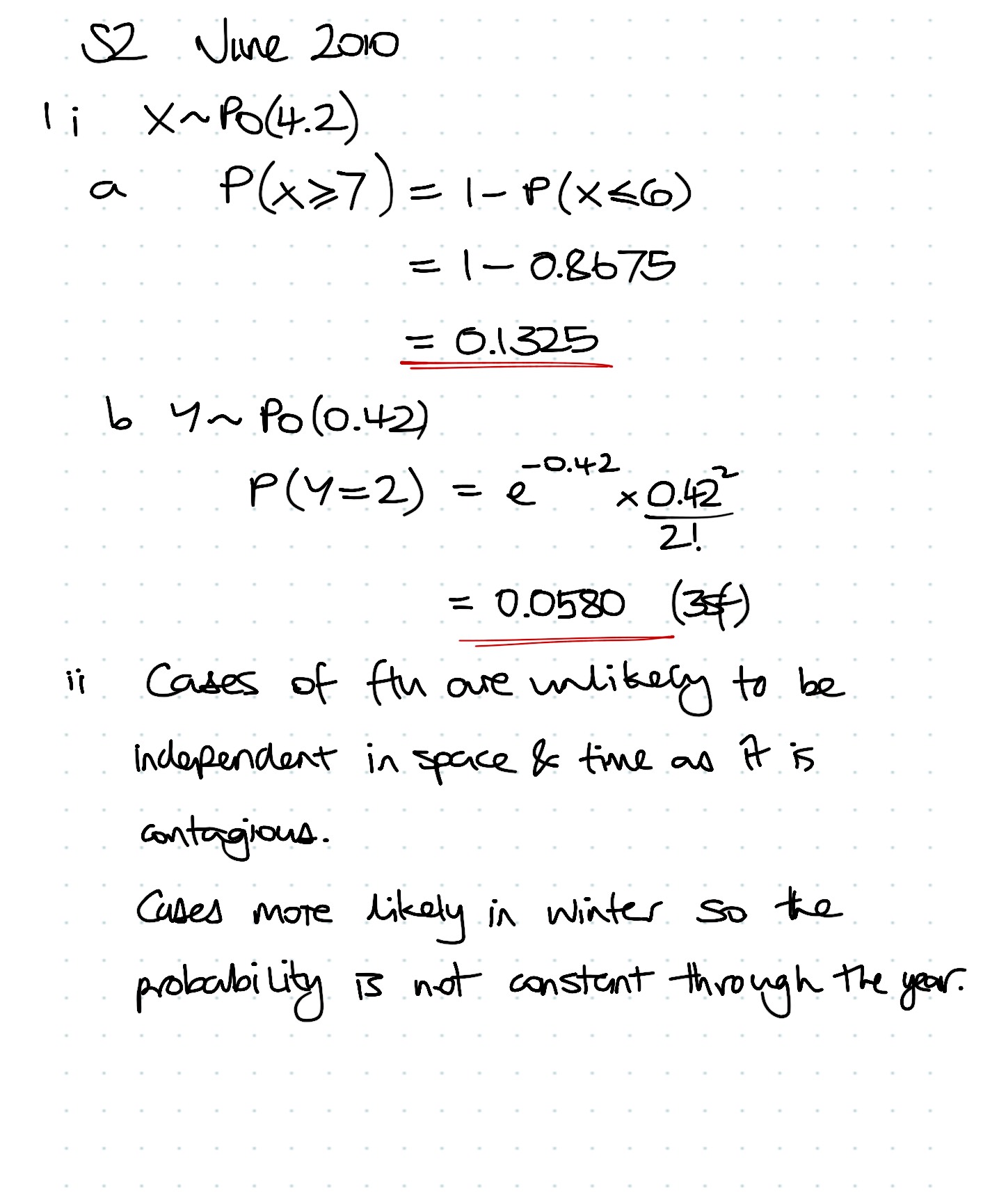When should you divide by n, or use n/n-1 with the variance when calculating values based on normally distributed variables?
Tags: Teaching, Solutions, posts, School, A Level, Exam, S2
April 03, 2018 at 04:37PM
Open in Evernote

When should you divide by n, or use n/n-1 with the variance when calculating values based on normally distributed variables?
Tags: Teaching, Solutions, posts, School, A Level, Exam, S2
April 03, 2018 at 04:37PM
Open in Evernote
Tags: work, Teaching, Solutions, posts, School, Exam, S2, A5 Squared, Whitelines Link
March 07, 2018 at 08:25PM
Open in Evernote
Tags: Solutions, posts, A Level, S2
January 16, 2018 at 07:52AM
Open in Evernote
Solutions to the even numbered questions of S2 Misc 4 textbook:
Solutions to differential equations sheet given in lesson.fp3-differential-equations_MS



























Exercise 5F1 a £260 b £307.50 c £323.75 d £2892 a £7.50 b £9.05 c £5.80 d £10.753 a 38 h b 41 ½ h c 35 h d 40 h4 a Fewer hours b More pay5 a £540 b £7026 £6.907 375 – 330 = 45, 45 ÷ 6 = £7.50. (375 – 12 × 7.50) ÷ 7.50 = 38 hours8 £1 ¼ x9 Pay is £442.50 tax is £88.50, NI is 442.50 – 88.50 – 327.45 = 26.55, 26.55 ÷ 442.5 = 0.06, so the NI rate is 6%10 407 factorises to 1 × 407 or 11 × 37, so Jeff works 37 hours a week at £11 per hour.
Exercise 5G1 18 mph2 280 miles3 52.5 mph4 11:50 am5 500 seconds6 a 75 mph b 6.5 h c 175 miles d 240 km e 64 km/h f 325 km g 4.3 h (4 h 18 min)7 a 2.25 h b 99 miles8 a 1.25 h b 1 h 15 min9 a Sheffield to London via Midland mainline 74.38 mph. Sheffield to London via East Coast mainline 78.26 mphb Doncaster to London 94.12 mph10 a 120 km b 48 km/h11 a 30 min b 6 mph12 a 10 m/s b 3.3 m/s c 16.7 m/s13 a 90 km/h b 43.2 km/h c 1.8 km/h14 18 m/s is 64.8 km/h. 40 km at 64.8 km/h is 0.617 hours ≈ 37 minutes so train arrives at 8.07 am
15
Time 10 10.15 10.30 10.45 11Ajeet 16 20 24 28 32Bijay 0 6 12 18 24
Time 11.15 11.30 11.45 12 12.15Ajeet 36 40 44 48 52Bijay 30 36 42 48 54
Bijay catches Ajeet at 12 noon
16 Rebecca: 10 minutes at 50 mph covers 8.333 miles, 10 minutes at 70 mph covers 11.666 miles, so total distance is 20 miles in 20 minutes which is 60 mph, so Rebecca is correct.Nick: 10 miles at 40 mph takes 15 minutes, 10 miles at 60 mph takes 10 minutes, so total distance is 20 miles in 25 minutes, which is 48 mph, so Nick is wrong.17 Josh should take 40 minutes. Nell should take 50 ÷ 70 × 60 = 42 minutes, but Josh is likely to meet traffic through town so is unlikely to travel at anywhere near 30 mph. Nell is likely to be able to travel at 70 mph on the motorway.
Exercise 5H
1 a 0.75 g/cm32 4 pa3 8.33 g/cm34 2 ½ N5 32 g6 5 m²7 120 cm38 156.8 g9 30 × 2010 By the handle as smaller area
11 So they can walk on sand easier due to less pressure on the surface.12 a 19.3 kg b 19.3 kg. Mass is samec On largest face 965 Pa, On smallest face 3860 Pa13 First statue is the fake as density is approximately 26 g/cm³14 Second piece by 1 cm³15 0.339 m³16 Areas are ½ m². 0.8 m². 0.4m². Sides are 1 m, ½m and 0.8 m17 a T b F c F d T















